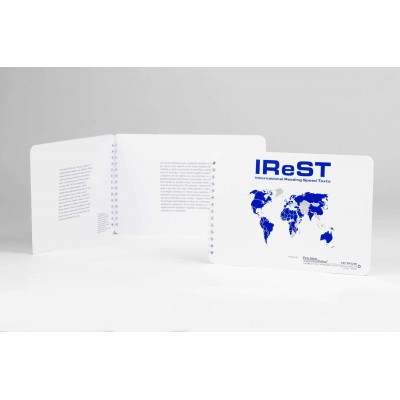- 50% SALE
- Anatomy of the Eye
- Domiciliary
- Illuminated Cabinets
- Low Vision Aids
- New Products
- Charts & Distance Tests
- COVID
- Clinical Trials Products
- Dispensing & Workshop
- Field Screening
- General Refraction
- Amsler Chart
- Autorefractors & Keratometers
- Bagolini Striated Lenses
- Cardiff Cards
- Clip-on Occluder
- Colour Tests
- Cross Cylinders
- Domiciliary
- Filter Bars
- Fixation Sticks
- Halberg Clips
- Lens Confirmation Tests
- Maddox Phoria Measure
- Maddox Wing Test
- Near Vision
- Occluders
- Optician Starter Kit
- Optokinetic Drum
- Paddle Retinoscopy Rack Set
- Pen Torch
- Polarising Visor
- Prisms & Prism Bars
- Refracto-Rack
- Stereo Tests
- Trial Frames
- Trial Lens Sets
- Trial Lens Spares
- Volk & Ocular Lenses
- Furniture
- Scopes & Loupes
- Sports Vision
IReST – International Reading Speed Texts
Highly calibrated for reproducible results across all languages
Easy to use
Easy to handle
Easy to measure (by stopwatch)
Easy to calculate (normal values and formula included)
Characteristics:
Comparability between languages for international studies
Natural conditions: newspaper print, meeting the demands of everyday life
Applications:
For normal subjects
For patients with low vision (monitoring of disease, effect of treatment and rehabilitation)
For patients with developmental dyslexia (severity of reading disorder, effect of training, etc.) – for juveniles and adults
Low Vision patients
Disease monitoring in AMD, especially in treatment studies
After refractive surgery
After multifocal intraocular lenses
Neurological reading disorders
Developmental dyslexia
Studies with normal subjects
User groups:
Ophthalmologists and neurologists
Optometrists and ophthalmic opticians
Orthoptists and low vision specialists
Teachers and psychologists
All reading researchers
The IReST differs from prior text charts that used single sentences by employing linguistically standardized paragraphs. They close a gap in the diagnostics of reading performance. The paragraphs are designed to resemble everyday life situations of reading continuous text, such as in books or newspapers. The level of difficulty corresponds to sixth grade reading (10–12 years), which is comprehensible for teenagers and adults. Due to lower variance, measuring reading time of a complete paragraph rather than a single sentence or random words is more reliable. Furthermore, it can provide some information about fluency, fatigue, and mistakes.
Article of Interest: Effects of home reading training on reading and quality of life in AMD – a randomized and controlled study






